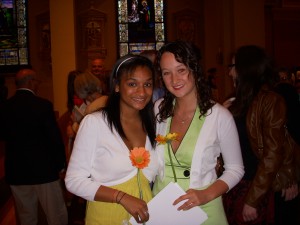I love history. My history, your history, all history. You could say I spend too much time looking over my shoulder, at what was, and what might have been. I admit that I ascribe the the Old South habit of near ancestor-worship. My grandmother taught me to love history by telling me stories about her past, our family’s past. After she died, I inherited much of her furniture, some that dates back to the 1850’s. Until I remarried a few years ago, my entire house looked like a diorama of an early 1900’s home. My new husband is the one who brought it to my attention and that he did not want to live in a museum. I had not realized that I was trying to actually live in the past. Now I try to keep only one foot there.
Recently, I was poring over old genealogical charts, imagining peoples’ lives through their birth, marriage, and death dates and locations. I can see the progression of these settlers across the frontier, from Virginia and North Carolina, over the Smoky Mountains, to western Tennessee. While looking at the chart I noticed that a grandfather named Nathaniel, born in 1796, had a son by a slave woman. The names of his descendants were listed on my chart. The last name in that line was Willie (Bunnie) and had Nathaniel’s surname. The last name is unusual, and French. I suddenly thought, it is not impossible that with such an unusual name I might locate this person.
I googled her. I could not believe it when I found two hits. One a very old woman in New Jersey and the other a 61 year old woman in Chicago. Of course, I face-booked her, and I followed links to her career in radio, on the FM dial as well as satellite XM. I had her phone number, so before I lost my nerve I called. I got an answering machine and left a message. “I think we might be related…..”.
That was in September, and after no response for a few weeks, I sort of forgot about it. Probably I was wrong about the family connection, or even more likely, maybe we were related, but she chose not to revisit thoughts of her ancestor being at best coerced, but most likely raped by this white man, Nathaniel. I had apologized in my message to her for invading her privacy and that I understood if she did not wish to respond.
Then last Friday out of the blue I saw a missed call on my phone and heard a voice-mail from Bonnie, asking me to call her. I called her back immediately.
Yes, we are indeed related, she said. She was interested in history and genealogy as well and had researched beyond Nathaniel to the seventeenth century. I felt like Henry Louis Gates, Jr., would appear any second, that I was on the television show “Who Do You Think You Are”. She proceeded to tell me how a community of French families had settled in Arcadia, Nova Scotia in the 1600s and were later pushed out by the English in the 1700’s. A part of this contingent resettled in North Carolina, where Nathaniel was born.
Bonnie very graciously told me about her great-grandfather Anderson, Sr., who was the child of Nathaniel and the enslaved woman. He grew up in North Carolina and had a wife and children there. Around the 1840’s, Nathaniel asked Anderson if he would help him move his family from North Carolina to a new homestead in McLemoresville, TN. In return for this help, Nathaniel would give Anderson a parcel of his homestead acreage. Anderson agreed, helped his father to move, then returned to North Carolina to retrieve his own family. Bonnie said that her grandfather Anderson, Jr. told her that his father’s family was no longer there. They had disappeared. Bonnie reflected on that, concluding that they were most likely sold while he was away.
Anderson, Sr. returned to his new homestead and eventually married a woman named Mary. Together they had many children, among them Anderson, Jr. The family and their descendants continued to live on that parcel of land as farmers. Bonnie’s grandfather told her that “although the two families lived on adjoining land they did not associate with each other, but that when they saw each other they always treated each other kindly”.
In 1936 Bonnie’s father Manley left that rural town on a bus bound for Chicago at the young age of 17. He joined the Great Migration, trying to escape the repressive Jim Crow south. He served his country proudly in WWII and like other Americans across the country he came home after the war and started a family. Bonnie related to me that throughout her childhood she returned every summer to the old home-place in tiny McLemoresville, and experienced Jim Crow herself, in the 1950s and ’60s.
The old home that Anderson, Sr. built is still there, but now its boarded up and covered with vines. Family members still live on the land, and occasionally they gather for family reunions. I do not know if the “other” family still inhabits the nearby parcel, but I do know that while Bonnie’s people always knew about this conjoined history, in my family it was hidden. This encounter with Bonnie has served to reinforce to me how very interconnected we all are, blacks and whites, in America. Bonnie and I are just as much family as all the other people and names on my genealogical charts. Although imagining these ‘new’ relatives lives from birth, marriage, and death dates and locations is uncomfortable, it is important for me to recognize and acknowledge their pain and endurance in the face of such racism and inequality as well as their rich participation in the settling, building, and defense of this country.

